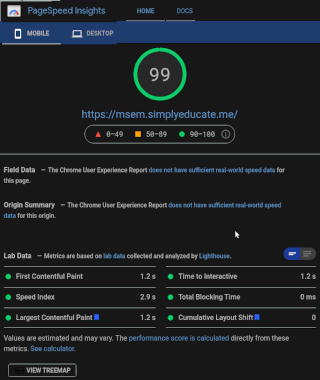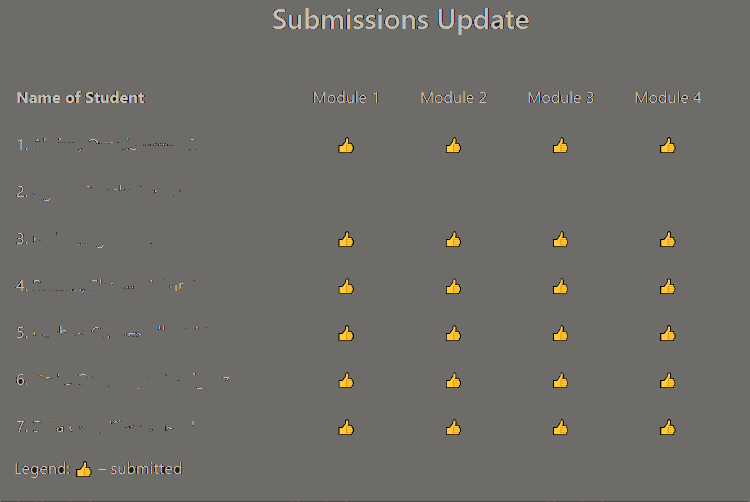Table of Contents
Preface
Due to the COVID-19 pandemic, many teachers in affected areas worldwide suddenly faced the task of getting their instructional materials ready to facilitate modular learning as a strategy for the sustained delivery of education to their students. I am one of these teachers, but the possibility of teaching the students exclusively online did not deter me because I have already worked on my instructional modules designed for online delivery.
Since 2012, and during COVID-19 times, I gradually developed a learning model for effective modular learning. I call it the Blended Website Learning Model, an innovative learning system that I immediately put to use at the beginning of the pandemic.
So if you’re someone willing to innovate in your modular learning approach and make the teaching and learning process more efficient and less time-consuming, I dedicate this article to you. You may work on the tips gradually until you become comfortable with them.
Once you can apply these eight tips to your classes, I assure you that you will not be spending endless hours checking your papers and getting frustrated with the inability of your students to keep up. Once in place, you will spend less effort and time to work on your instructional materials for modular learning in the new normal.
Besides, today’s trends follow a digital path as global technological innovations occur at light speed. Teachers have to keep up to be relevant.
Given the experience I gathered through the years, I would like to share eight tips on modular learning. These tips will somehow ease the teachers’ struggle for something they are not mentally and technically ready to face. The pandemic has changed the way teaching is carried out.
I start this discussion by defining modular learning, asynchronous versus asynchronous delivery of lessons, problems encountered, and solutions to those problems.
Earlier, I synthesized the lessons learned and the corresponding fixes in a learning model – the Blended Website Learning Model for more effective achievement of desired learning outcomes or most essential learning competencies (MELCs) for each course. You may refer to this model later on.
What is Modular Learning?
Modular learning, as the word connotes, uses learning modules that facilitate student learning by themselves. Modular learning is a form of distance learning that uses Self-Learning Modules (SLM) based on the most essential learning competencies (MELCS) developed by the teachers with the aid of curriculum developers.
The modules include sections on motivation and assessment that serve as teachers’ and students’ guides to achieve desired competencies. Feedback mechanisms aid teachers in monitoring student achievement and identify those who require follow-up interventions.
Self-paced learning modules can educate learners through carefully written guideposts that direct the learner on what action to take. The contents of the learning module follow a particular learning model that makes instruction effective.
Upon our department chair’s advice, I used the 4H or Experiential Learning Model (ELM) based on the Experiential Learning Theory developed by educators for more than a century. I am not an education graduate. Hence, I have to study ELM carefully.
8 Tips to Achieve the Course Outcomes in Modular Learning
1. Write your instructional tips to students online
Teaching is a repetitive exercise. So what I did is to write articles about the lessons I teach and publish them online. I update those articles once in a while to ensure their relevance.
Although educational articles on almost anything under the sun can be found online, I find some tips lacking credibility and proper documentation. Thus, I embarked on my blogging platform (this website) to house my tips for students on specific topics I teach in the classroom.
I made sure that the tips I gave use the latest information or reliable references online for my students to refer to for further reading. Besides, many of the legitimate and well-referenced material are behind a paywall which my students do not have the means to purchase. Nevertheless, there are free, open-access articles that anyone can access with extra effort.
2. Compress and upload instructional materials on a fast-loading website
I uploaded all of my instructional modules in pdf on a fast-loading website I created at the beginning of the pandemic. I compress each module in the free pdf compressor provided by ilovepdf.com. Compressing the modules makes downloading into students’ smartphones easy. The small files also save them bandwidth, thus reduced data consumption in their internet subscription.
I studied website development for quite a while, anticipating the emphasis on modular learning in the future. I started with Webnode sometime in 2012. Webnode uses drag-and-drop technology, which works for a beginning website developer like me. I even purchased a domain name for my free account on that website.
However, after several years of use, I found the technology lacks the flexibility I need. I want to maintain an independent website without the costly upgrades when the traffic exceeds my subscription. Hence, I shifted to an independently hosted WordPress.org Content Management System (CMS) platform. But not before I practiced in the WordPress.com website.
WordPress as a Tool in Modular Learning
I used WordPress to develop the simple but fast-loading website that students can easily load on their cellphones. It scores an almost perfect speed of 99% in both mobile and desktop (Figure 1).
I used Neve, a WordPress theme with no frills nor bloat software, to delay loading. All instructional modules are instantly available to students after entering the password I gave them.

The instructional material website simply works. No frills, no fuss.
Anyone can easily create a WordPress website in minutes. Just have your email and password ready to create an account in WordPress.com for free. You can create your website later, like what I did when I first started. As you practice using the free WordPress website, you will get to be familiar with how websites work.
You may listen to the simple instruction in the video I give below. Knowing how to create your website will give you more opportunities to become digitally savvy. Modular learning will be much more easily as you gain experience and expertise.
3. Use a Learning Management System to assess student performance
I had a limited two-day training on the use of Moodle before the COVID-19 pandemic began. By a stroke of luck, I could use the LMS as a modular learning tool in the middle of the semester when the government declared a nationwide Enhanced Community Quarantine (ECQ) to stem the brewing spread of the dreaded virus.
Using a Learning Management System (LMS) such as the free, open-source Modular Object-Oriented Dynamic Learning Environment (MOODLE) can help a lot in designing quizzes and periodic examinations. The once time-consuming task of checking the students’ quizzes and periodic examinations is done real time.
Using a Learning Management System (LMS) such as the free, open-source Modular Object-Oriented Dynamic Learning Environment (Moodle™) can help a lot in designing quizzes and periodic examinations. The once time-consuming task of checking the students’ quizzes and periodic examinations is done real time.
Students get their quiz or exam results in a matter of seconds. Once they submit their quiz, long exam, or midterm or final exam, they get the results right away.
I give students two chances of taking the quiz or major examination, mindful of the glitch that students experience while taking the assessment. Last semester, the internet connection of some students break while taking the quiz. Hence, it is good practice to give them another chance. Further, giving the students another chance to take the quiz provides them an opportunity to correct their answers and establish mastery of the subject matter.
I pushed my knowledge of Moodle further, not by just being a user, but by studying the process of its installation, mainly as part of my hobby and partly as a challenge to create a website to house the LMS myself. Having my own Moodle site gives me the independence and freedom to innovate.
I realized I can create an independent Moodle site on my GoDaddy server. In short, I figured that the only thing I need to put Moodle to work was to register a unique domain name. I hosted Moodle in the same platform where my blogging site, Simplyeducate.me, is being hosted. The LMS had virtually a free ride as a sub-domain.
I don’t mind spending a little more for my convenience. It’s an investment to save time and effort. In addition, I learn and enjoy the new functionality as I implement the system.
Moodle takes time to load; it’s slow
Although Moodle was designed to house complete learning modules for learners, my students have trouble accessing it. I had the impression that Moodle, being an open source project, had too many functionalities that made it heavy to load. Also, many of my students use cellphones in accessing the lessons online.
After spending considerable time looking for answers online and tweaking the Moodle website, I gave up, even though I successfully enhanced the speed of the LMS. I cannot make the Moodle site load faster without adding more investment in Random Access Memory (RAM) capacities and having it work on a Solid State Drive (SSD). I have a limited budget for this expense.
But Moodle is a good performance assessment site that enhances modular learning
I found the assessment function of Moodle very useful, so I kept it as an assessment site that students will log on once they are ready. Another advantage is that the LMS enables me to prepare my quizzes easily and checks the quizzes and periodic exams automatically. I just record the points my students get in Excel to give the corresponding percentages on the different assessment criteria.
That functionality surely saved me time in checking the students’ performance. It’s even better than administering questions in a face-to-face learning session. It worked well for me serving as an assessment site. I just set the period wherein the quiz will be available to students.
Also, the system can shuffle the questions and the answers in the exam. Each student has a different set of questions and answers, ensuring a unique performance record.
4. Conduct regular short synchronous meetings to remind and update the students
I conduct regular, synchronous meetings with my students to give them a feel of classroom ambiance; it simulates a face-to-face interaction. While most of my students can attend the meeting via Zoom, a video teleconferencing software program, several of them could not connect to the internet for valid reasons.
Among the valid reasons I have learned from my students for their inability to connect during synchronous meetings are the following:
- poor internet connection,
- exhausted data allocation,
- attending to emergencies, and
- brownouts.
Recording of synchronous meetings
Recognizing these student difficulties, I always record the proceedings of the synchronous meetings. I upload the zoom video in MP4 format in mediafire.com, the cloud service I have been using for easy access. Then I provide a link to the fast website I created for the instructional materials.
Once the students have the opportunity to go online after resolving their issues during synchronous meetings, they are able to access the proceedings of the meeting. The poor internet connection can be remedied by going online during non-peak hours. Midnight until the early hours of the morning appears to have fewer users online.
The recorded videos do not last more than an hour. Making them short saves bandwidth as well as limits file size to a manageable size that students can download with ease.
5. Follow-up students through Messenger
Almost everyone has an account on Facebook together with Messenger nowadays. I tell my students to communicate with me through Messenger if there are concerns that they need me to know.
During Zoom sessions, some students could not easily express their burdens while others listen. Hence, they can send private messages to prevent getting embarrassed for their queries.
Since most of my work is done online, I can readily see the notifications that I have messages from my students. I consider the communication part of my consultation time. It also presents an opportunity to empathize with the students on their unique concerns.
So far, Messenger has become an effective tool to connect with students and give them support, especially in crucial times. Also, it is easy to find them online if I need to issue additional instructions related to the subjects I teach.
6. Use an Ishikawa diagram to contextualize the Most Essential Learning Outcomes
Given the considerable time that students have to devote to keeping up with their subjects, I design my modules as briefly as I can muster without sacrificing the essential outcomes of the modules. I present these outcomes in an Ishikawa or fishbone diagram at the beginning of the semester.
Figure 2 presents an Ishikawa diagram showing the learning outcomes I prepared for my students. The diagram visualizes the expected competencies that students could gain during the semester. Guided by the outline, they will see their pace in context while performing the tasks at hand. Seeing the goal serves as motivation for them to go on.

The fishbone diagram motivates the students concerning the overall outcome of the things that they do each learning session. One learning activity progresses to another one that leads towards the goal of learning.
Hence, the process of modular learning becomes meaningful to students. Incremental, modular learning transpires.
7. Give generous time for achievement of MELCs
I give a generous time of at least two weeks for students to achieve the expected learning outcomes. Giving them leeway to perform and reflect on their assigned tasks facilitates retention and helps them perform at their very best.
Writing many tasks without enough time to ponder or reflect on their work leads to a half-baked performance. Thus, less than stellar work dampens the motivation to do things in the best way they can.
Seeing some prescribed MELCs as part of modular learning online, I get the impression that they’re more applicable to face-to-face interactions. Chances are, the students become overstressed with tasks to do without the focused guidance of their teachers, making online learning a mechanical activity fixated on compliance.
8. Use a Feedback table
To keep track of student performance and encourage them to perform within the time frame, I prepared a feedback table to show what stage they were already in. Whenever I meet the students during synchronous meetings, I present the feedback table to the class and ask them if I have recorded their submissions correctly.
Some of my students would tell me they have submitted, but I could not verify their submissions. Perhaps failing to upload is due to a poor internet connection. Given the real-time feedback I get via Messenger, they try again until they have successfully uploaded. I confirm that I have received their outputs. Thus, the student’s anxiety because of failure to upload the required submissions is eliminated or minimized.
The feedback table finds support in Dr. Tali Sharot’s book on changing people’s behavior. It emphasizes the importance of feedback to change people’s behavior.
I invite you to listen to the highly motivating speech of Dr. Sharot in TED Talk that can change not only your student’s behavior towards the assigned tasks but also your ingrained habits. The lecture emphasizes the importance of feedback.
The feedback table instantly tells me potential problems and takes corrective measures before they get worse. Students exert more effort to keep up with their classmates once they notice that some of their classmates have already accomplished the modules. Modular learning becomes more effective with a monitoring system like this.
Figure 3 provides an example of a feedback table where you can quickly troubleshoot submission problems and ensure that no student is left behind.

Modular Learning is here to Stay
Whether the pandemic will last for quite a time, online modular learning will become the norm rather than an exception. The educational system has already shifted to Education 4, in tune with Industry 4.0, where interconnectivity through the Internet of Things (IoT), lies at its core.
Despite the setbacks experienced by teachers on the effects of modular learning, we must be progressive in our thinking. The challenges are not without answers as technology progresses. Most students can access a laptop, or virtually everyone can access a cell phone, to download educational materials like the ones I make available on my IM website.
Although some of my students are hundreds of miles away, or even on an island, they can still access my instructional modules using their cell phones. I make online learning easy for them by applying the tips I previously gave—make the website load faster by compressing images and videos and make my instructional modules simpler to follow. I focus on a few but crucial and most essential learning outcomes.
Stop being bookish. This time it’s online learning, not face-to-face classes where you cram in everything you want to the detriment of your students.
A 30-minute or less synchronous meeting is more than enough to brief your students about the module, the expected learning outcomes, and ask a few questions to get their feedback on the modules and constraints on their performance.
Advanced countries are already eyeing the many uses of machine learning, and interest is growing in getting a degree in this field. Are our students ready to become part of this technological development?
In the information age, teachers are no longer what they used to be. We are now facilitators and innovators of learning through online modular learning as the information age changed the way people gain information.
We must undo the belief that we are the authorities of knowledge. Digital technology has shaped how we live, learn, and navigate this increasingly automated world.
Kudos to all teachers! Let’s rock the world of online modular learning.
© P. A. Regoniel 22 June 2021



Thank you for your comment. Teaching in the new normal requires constant innovation and a change in mindset.
Thank you so much for sharing this! The different modes of learning in this new normal are somehow confusing, but this really helped. I also appreciate the tips you gave on how to teach effectively in modular learning!